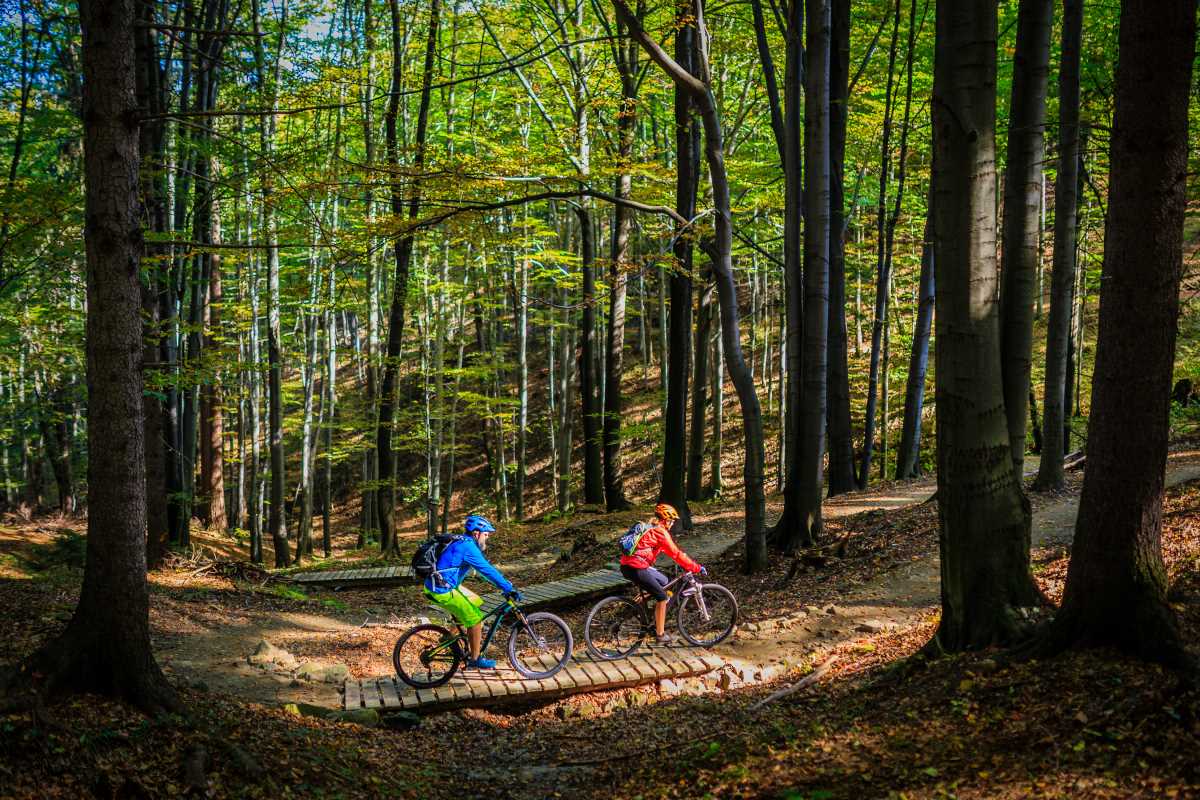Fresh air greets you on a summer morning as you set out along a shaded trail, the world slowly waking around you. Each turn down a quiet path or rocky stretch reveals something new, inviting a sense of discovery that lingers well beyond your ride. Venturing beyond familiar routes brings vibrant views, tests your endurance, and offers unfiltered moments where you feel truly free. Choosing these lesser-known roads can break the cycle of routine, offering a welcome change that sparks excitement. Discover how a simple bike ride with your favorite Specialized or Trek can transform an ordinary day off into a memorable adventure.
Finding Routes That Spark Curiosity
- Search for maps that highlight contour changes and water features to discover trails with hidden overlooks. Focus on elevation profiles instead of popular names, and you'll find segments where streams and switchbacks meet under tree canopies. Carry a paper map alongside a GPS-powered app so you can compare real terrain with digital suggestions, and mark detours that catch your eye for next time.
- Use seasonal trail guides published by local clubs to find less-used connectors. These collections often share unpolished loops waiting for first-time explorers. Save contact information for regional riding groups, then subscribe to their newsletters so you receive updates about new routes without sifting through generic online lists.
- Look for public land parcels next to established systems. Small forest patches or decommissioned rail corridors can connect big-name loops into unique circuits. Save coordinates early in planning, then test connectivity by riding those links at low speed to assess surface conditions before inviting friends for a full-day circuit.
Immersive Trail Adventures Explained
- Begin by creating a mood board of landscapes—photographs of redrock passes, pine-shaded valleys, or coastal bluffs. Use these visuals to guide your route choice instead of star ratings. This way, you pursue scenery that excites you rather than following crowds.
- Add a terrain challenge benchmark, such as average grade or technical difficulty. Use tools that calculate slope percentages so you know where muscle-burning climbs lie versus flowy descents. This helps you balance physical effort with the joy of maintaining momentum.
- Plan rest stops around natural features: river crossings, summit viewpoints, or meadow clearings. Write down estimated mile markers and note gear stashes near water sources—this setup ensures you can refill bottles without breaking your rhythm.
- Check the forecast for the night and adjust start times to arrive at key viewpoints under ideal lighting. Early morning rays soften rock hues in canyons, while late afternoon shadows add texture to forest floors. Timing your ride for these windows turns a route into a living gallery.
- Set one mini-challenge per trip—spot a wildlife species, complete a no-dismount obstacle section, or find a hidden geocache. Small goals keep the trip exciting when miles stretch on. Share that target with a riding partner to create friendly rivalry and celebrate success.
Practical Guide to Hitting the Dirt
- Trail Planning: Imagine the entire ride’s flow clearly. First, sketch a rough map outlining start, midpoint, and finish. Next, list three expected terrain types—gravel, singletrack, fire road—to adjust tire pressure. Finally, estimate the time needed for each segment based on your average speed. This plan sharpens your focus, prevents surprises underfoot, and keeps your momentum steady.
- Gear Organization: Arrange equipment into categories—navigation, repair, hydration, nutrition. Spread items on a tarp in order of how often you use them. Pack higher-priority tools closer to easy-reach pockets in each category. Confirm the total weight stays within your set limit, such as ten percent of your body weight. An insider tip: attach repair levers vertically so they don’t rattle loose on rough sections.
- Hydration Schedule: Break the ride into hydration intervals, not just when you feel thirsty. Fill bottles to marked levels at each refill station, and set a timer for 20 minutes between sips. Track your intake during the first hour to understand your needs for longer trips. Local springs often taste fresher than roadside taps—keep a backup filter in your bag.
- Snack Plan: Alternate between quick carbs, protein bites, and electrolytes. Arrange snacks in a specific order: a handful of trail mix, an energy bar, then chews or tablets. Consume in that rhythm every 45 minutes. Write down how your body reacts to each type so you can improve your approach on future rides. Packing a small container with fruit slices adds freshness when temperatures climb.
- Emergency Procedure: Create a simple plan: if someone falls, the first responder secures the bike, the second checks injuries, and the third calls for help or rides out. Practice this plan at home with your group to avoid confusion under pressure. Keep emergency contacts and a small first-aid kit in a waterproof pouch at the top of your pack for quick access.
Equipment Essentials for Trail Comfort
Selecting the right saddle and dropper post setup can turn rough terrain into a smooth ride. Choose models with adjustable damping so you can change seat height during your ride. When descending rocky sections, lower the saddle by an inch to shift your weight, then raise it again for climbs. This simple adjustment improves safety and speed.
Handlebar grips with dual-density foam absorb shocks without losing feedback. Pick grips with a slight arch to support your palm’s natural curve. Pair them with gloves that have gel padding at pressure points—this reduces numbness when the trail rolls through roots or loose stones. Small upgrades here make long rides feel less tiring.
Adding Local Flavors
Enhance your trail rides by enjoying local flavors—pick up fresh fruit from roadside farms or pastries from hidden-town bakeries. Chat with locals and sample regional coffee to deepen your connection to the area. These small stops turn each ride into a cultural adventure you’ll remember long after the trail ends.
 (Image via
(Image via





